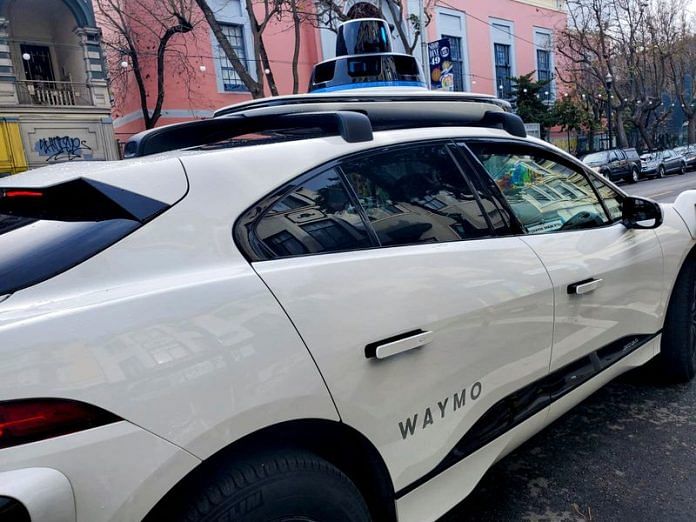By Abhirup Roy
SAN FRANCISCO (Reuters) – Alphabet’s Waymo will add electric vehicles from South Korea’s Hyundai Motor to its robotaxi fleet, the companies said on Friday, as Waymo expands in the United States.
On-road testing for IONIQ 5 SUVs – assembled at Hyundai’s Georgia facility and equipped with Waymo’s autonomous technology – will begin by late 2025, they said.
Waymo has about 700 vehicles in its fleet and is the only U.S. firm operating uncrewed robotaxis that collect fares.
The partnership with Hyundai comes days before Tesla CEO Elon Musk is set to unveil plans for a robotaxi product that is expected to use a custom-built vehicle. Musk may also discuss plans for his company to run a ride-hailing platform that will allow Tesla owners to list their vehicles when not in use.
Waymo now uses I-PACE vehicles from Jaguar Land Rover, owned by India’s Tata Motors. Waymo is also testing its technology using vehicles from Zeekr, the EV brand of China’s Geely. A spokesperson for Waymo said the Hyundai partnership will not directly replace any of its current vehicle platforms.
This year, Waymo opened its service to everyone in San Francisco, without the need to join a waitlist, while expanding its operations in metro Phoenix. It also extended services to the San Francisco Peninsula and to certain parts of Los Angeles.
“The team at our new manufacturing facility is ready to allocate a significant number of vehicles for the Waymo One fleet as it continues to expand,” Jose Munoz, global COO of Hyundai Motor said in a statement. “We are actively exploring additional opportunities for collaboration.”
Despite widespread skepticism, tight regulatory scrutiny and federal investigations on AV technology, Alphabet said this year it was planning a multi-year $5 billion investment in Waymo.
In August, Waymo said it had doubled its paid rides to 100,000 per week in just over three months as it expanded its areas of service and allowed more people to ride its robotaxis.
Others in the race include General Motors’ Cruise, which is testing cars with human safety drivers after an accident last year led it to pull all vehicles from the road, and Amazon’s Zoox, which is expanding testing for its vehicles built without steering wheels and pedals.
(Reporting by Abhirup Roy in San Francisco; Editing by Peter Henderson and Jacqueline Wong)
Disclaimer: This report is auto generated from the Reuters news service. ThePrint holds no responsibilty for its content.



